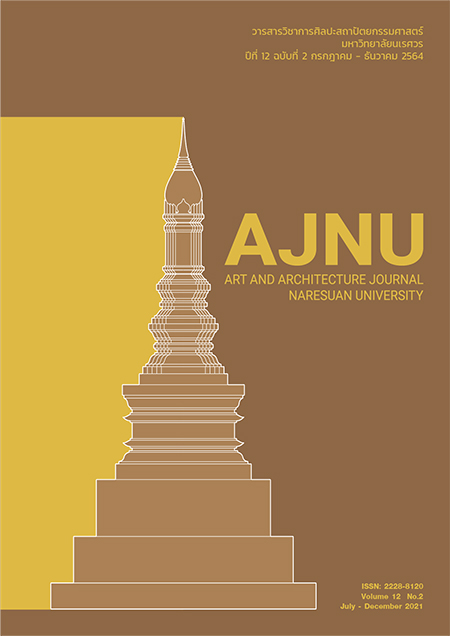Buddhist philosophy, the universal philosophy ; tell the buddhist philosophy through the conceptual art
Main Article Content
Abstract
This research is a descriptive analysis in the meaning of the conceptual art compared with the concepts of Buddhism. Because the researchers believe that the philosophy in Buddhism, especially the explanation of human life and death are profound philosophies and show the reality of the natural rule that every person should study and understand. The issue in philosophy of Buddhism that the researcher interested is the view of life and death that appeared in many works of contemporary art, Especially Conceptual Art.Therefore, the researcher has studied and analyzed the concepts in the conceptual art, which selected 5 works of famous legendary artists in contemporary art, by comparing with the views of life and death in the Buddhist way.The results of research found that Western contemporary art, even base from materialistic ideas but all of selected works show meaning relevant to the Three marks of existence. Which mean life is impermanence and life forereach to death in finally. The death is beginning to transfer life to a new world. This philosophy is the ultimate truth that the researchers believe. This truth will prevent those who believe in this principle to live without recklessness.
Keyword : Buddhist Philosophy, Conceptual Art, Three marks of Existence.
Article Details
References
พระไตรปิฎกฉบับภาษาไทย เล่มที่ 10-22 พระสุตตันตปิฎก, ทีฆนิกาย, มหาวรรค. มหาสติปัฏฐานสูตร (พระไตรปิฎกฉบับสยามรัฐ). [ออนไลน์]. เข้าถึงเมื่อ 15 ตุลาคม 2562,จาก http://www.84000.org/tipitaka/pitaka_item/v.php?B=10&A=6257&Z=6764&pagebreak=0.
เอบีดีทีม (A day Bulletin). (2561). มารีนา อบราโมวิค/จับเข่าสนทนาประสาศิลป์กับ Grandmother of Performance Art. [ออนไลน์]. เข้าถึงเมื่อ 15 ธันวาคม พ.ศ. 2562. จาก https://adaybulletin.com/talk-conversation-marina-abramovic/22377.
Abramovic, Marina. (Artist). (1974). Cleaning the Mirror#1. [Digital Image Online]. Retrieve 25 March 2020, from https://www.guggenheim.org/artwork/4374.
. (Artist). (2017). Cleaning the Mirror. [Digital Image Online]. Retrieve 30 March 2020, from https://theartisticreviewedinburgh.wordpress.com/2013/04/03/review-from-death-to-death-and-other-small-tales/.
Beuys, Joseph. (Artist). (1965). How to Explain pictures to a dead hare. [Digital Image Online]. Retrieve 15 February 2020, from https://www.artgallery.nsw.gov.au/collection/works/434.1997.9/.
Duchamp, Marcel. (Artist). (1913), “Nude Descending a Staircase, No.2”. [Digital Image Online]. Retrieve 25 March 2020, from https://en.wikipedia.org/wiki/Nude_Descending_a_Staircase,_No._2#/media/File:Duchamp_-_Nude_Descending_a_Staircase.jpg.
Essays, UK. (2018). How to Explain Pictures to a Dead Hare: Analysis. Retrieved 18 March 2020, from https://www.ukessays.com/essays/arts/explain-pictures-dead-hare-spiritual-5106.php?vref=1
Lyotard, Jean F. (1977). Les Transformateurs Duchamp/Duchamp's Transformers. [Online]. Retrieve 15 February 2020, from https://www.toutfait.com/issues/issue_3/Articles/Hoy/etantdon_en.html.
Quinn, Marc. (Artist). (1991) “Self” Blood sculpture. [Digital Image Online]
Retrieve 5 March 2020, from http://marcquinn.com/studio/studio-diaries/the-making-of self.


